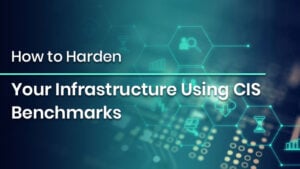
How to Harden Your Infrastructure Using CIS Benchmarks
How to Harden Your Infrastructure Using CIS Benchmarks Introduction As more organizations go faster with their digital transformation, the security and resilience of IT infrastructure
Limited-Time Offer! Get an exclusive 40% OFF on IPSpecialist Premium Monthly & Annual Plans. Use Promo Code: UPSKILLNOW at checkout.

How to Harden Your Infrastructure Using CIS Benchmarks Introduction As more organizations go faster with their digital transformation, the security and resilience of IT infrastructure

Azure Certifications – Validate Your Azure Cloud Skills Introduction Cloud computing has transformed the business landscape, providing scalability, flexibility, and affordability in a way

Top Cyber Security Trends: What Every Organization Must Know Introduction In an era marked by digital transformation, remote workforces, and rapidly evolving threat landscapes,
Table of Contents
Ransomware has rapidly emerged as one of the most significant cybersecurity threats in recent years, targeting organizations of all sizes and industries. This malicious software encrypts a victim’s data, rendering it inaccessible until a ransom is paid, typically in cryptocurrency. While attackers often promise decryption in exchange for payment, paying the ransom is not guaranteed to restore access. The financial and reputational costs can be devastating even if access is regained. Prevention is crucial to safeguarding your systems and data. Implementing effective security measures can significantly reduce the risk of falling victim to ransomware. This guide will explore the top 10 best practices for preventing ransomware attacks and protecting your organization.
Protecting your organization from ransomware requires a proactive approach and the right expertise. At IPSpecialist, we offer comprehensive courses and resources in cybersecurity, including ransomware prevention strategies and advanced endpoint protection techniques. Whether you are an IT professional looking to enhance your skills or an organization aiming to strengthen its security posture, our training programs are designed to provide the knowledge and tools you need.
Understanding the different types of ransomware is crucial to protecting your systems. Here are some of the most common forms:
Here are the top 10 best practices to help safeguard your systems from ransomware attacks.
One of the most critical defenses against ransomware is regularly backing up your data. Backups allow you to restore your data without paying the ransom in the event of an attack. Store backups offline and ensure they are frequently updated.
Outdated software often contains vulnerabilities that attackers can exploit to deliver ransomware. Keeping all your systems, software, and security patches up to date significantly reduces these vulnerabilities.
MFA adds an extra layer of security by requiring users to provide two or more verification factors to access accounts. Even if credentials are compromised, MFA makes it harder for attackers to gain unauthorized access to your systems.
Human error remains one of the most common ways ransomware enters a system. Phishing emails, malicious downloads, and unsafe web browsing are primary vectors for ransomware delivery. Conduct regular training sessions to ensure employees recognize these threats and know how to respond.
Emails are a standard delivery method for ransomware, often containing malicious links or attachments. Implementing robust email filtering systems and web protection tools can prevent such threats from reaching your network.
Network segmentation involves dividing your network into isolated segments. This strategy limits ransomware spread if one section of your network is compromised. Critical systems like finance and operations should be isolated from less critical areas.
Limiting user access to only the resources necessary for their role minimizes the risk of widespread damage if an account is compromised. Attackers typically aim to escalate privileges, so reducing these possibilities can limit the impact of an attack.
Traditional antivirus solutions are often insufficient against modern ransomware. Advanced endpoint protection tools, such as next-generation antivirus (NGAV) and endpoint detection and response (EDR) solutions, provide more comprehensive security.
Remote Desktop Protocol (RDP) is a common attack vector for ransomware. Attackers exploit weak RDP configurations to gain unauthorized access to networks. Securing RDP can significantly reduce the risk of ransomware attacks.
Despite best efforts, ransomware attacks can still occur. A well-documented and tested incident response plan ensures that your organization can respond quickly and effectively to minimize damage.
Ransomware poses a serious and growing threat to organizations worldwide, but with the proper preventative measures, you can significantly reduce the risk of an attack. Regular backups, employee training, multi-factor authentication, and a robust incident response plan are essential to a comprehensive ransomware defense strategy. By implementing these top 10 best practices, you can better protect your organization’s systems and data from ransomware attacks.
Ransomware is malware that encrypts a victim’s data or locks them out of their systems. Cybercriminals then demand a ransom, often in cryptocurrency, to restore access. It typically spreads through phishing emails, malicious links, or exploiting vulnerabilities in a system.
Common types include encrypting ransomware (which locks files), locker ransomware (which locks the entire system), and double extortion ransomware (where data is stolen before encryption). Understanding these types helps in creating tailored defense strategies.
Paying the ransom does not guarantee that you’ll regain access to your data. There is also the risk of being targeted again. To avoid reaching this point, it is essential to focus on prevention strategies, regular backups, and robust cybersecurity measures.
© 2025 All rights reserved | Privacy Policy | Terms and Conditions | Sitemap | Cookie Policy




